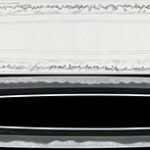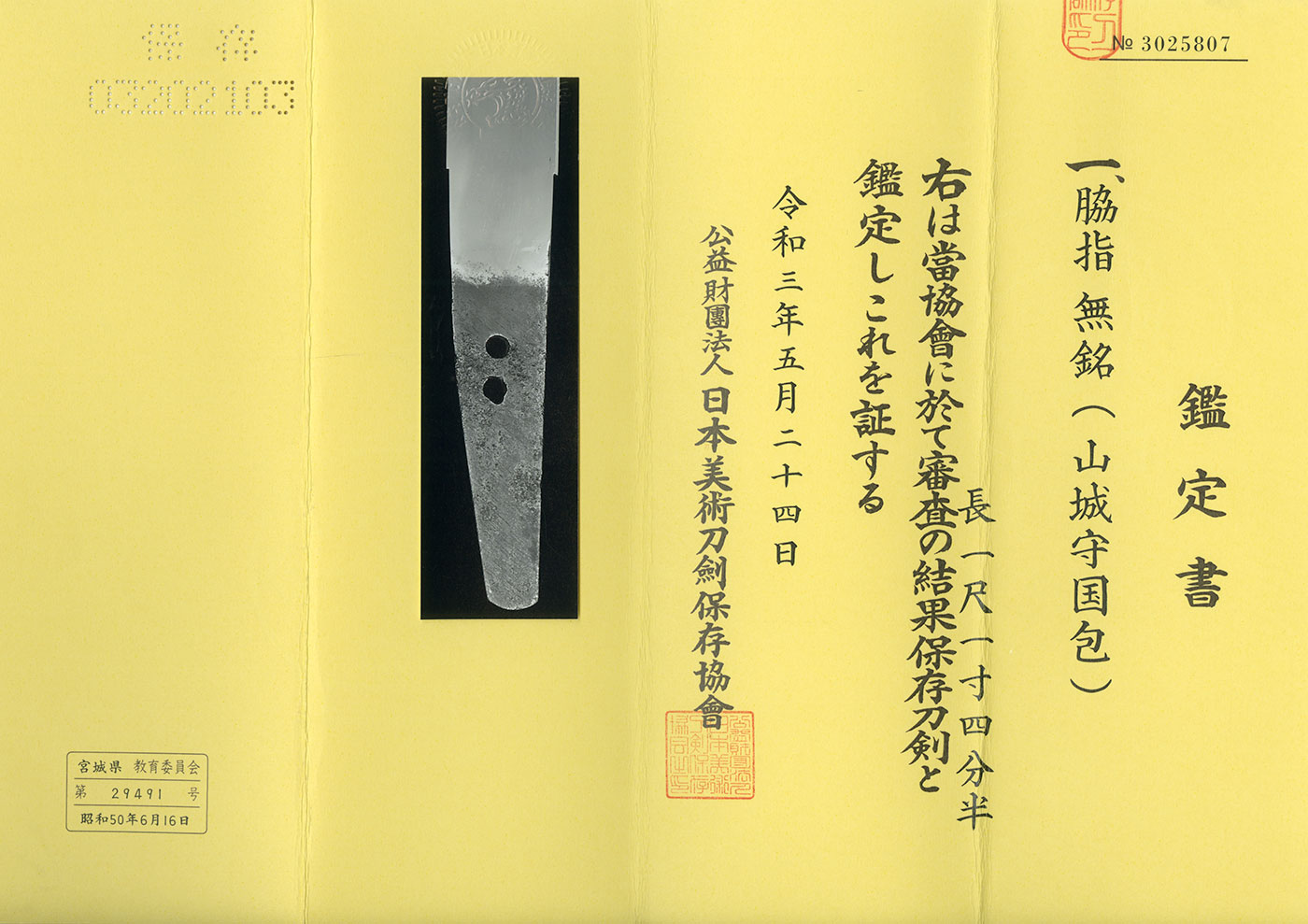Ordering number:24576
Wakizashi: Shirasaya with Koshirae (NBTHK Hozon Token)
Signature: Mumei (Unsigned) attributed to Yamashiro no Kami Kunikane
無銘(山城守国包)
We divide 4 sections for each sword as Saijyo Saku, Jyojyo Saku, Jyo Saku, and Regular Saku.
This piece is ranked as Jyo Saku.
Habaki: Single-layer silver.
Blade Length: 34.7 cm (13.66 in).
Curvature: 0.4 cm (0.16 in).
Sori: 2 cm (0.79 in).
Mekugi Holes: 2.
Width at Base (Motohaba): 2.94 cm (1.16 in).
Thickness of Rim (Kasane): 0.49 cm (0.19 in).
Sword Weight: 275 g (0.61 lb).
Era: Around the Kanbun period of the Edo era.
Shape: A robust piece with an extended tanto form, classified as a hira-uchi wakizashi.
Jigane: Well-forged masame hada with a pronounced grain pattern.
Hamon: Suguha with a gentle wave pattern, featuring an active ashi and a soft, deep nioiguchi, leading to a yakitsume boshi.
Features: This sword was appraised by the Sword Museum as the work of the second-generation Kunikane.
Aoi Art’s Comment: Although unsigned, this is a sizable and well-crafted hira-uchi wakizashi attributed to the second-generation Kunikane.
The hamon, with its deeply set nioiguchi and intricate ashi, highlights the exceptional quality of the work.
Historical Background: As Japan transitioned from the Muromachi to Edo period, the demand for swords declined.
Swordsmiths had to adapt by employing various innovations to sustain themselves.
In Sendai, masame hada craftsmanship became prominent, influencing many swordsmiths in the Tohoku region.
Some incorporated horimono carvings, kinzogan inscriptions, or unique hamon patterns like dotanba.
This dedication to innovation and refinement allowed Tohoku swordsmiths to maintain their distinctive masame hada style, resulting in beautifully preserved swords that showcase the resilient character of the region.
NBTHK Hozon Token.
Aoi Art Estimation Paper.
Whole Oshigata
Price:650,000JPY
Order Form
Related Items:
 Wakizashi:Suifu Ju Minamoto Norikatsu(Tokkatsu) Saku(First Generation)(NBTHK Tokubetsu Hozon Token)
Wakizashi:Suifu Ju Minamoto Norikatsu(Tokkatsu) Saku(First Generation)(NBTHK Tokubetsu Hozon Token)
 Wakizashi: Morishige (Shinshu Iida province, Shinto era)(NBTHK Tokubetsu Hozon Token)
Wakizashi: Morishige (Shinshu Iida province, Shinto era)(NBTHK Tokubetsu Hozon Token)
 Daisho:Tame Minobe Akihide Shi Chikushu Sanno Ju Sotsutomu Saku Showa 60 Nen 8 Gatsu Kichijitsu (August 1985)(NBTHK Hozon Token)
Daisho:Tame Minobe Akihide Shi Chikushu Sanno Ju Sotsutomu Saku Showa 60 Nen 8 Gatsu Kichijitsu (August 1985)(NBTHK Hozon Token)
 Wakizashi:Omi Daijo Fujiwara Tadahiro(NBTHK Hozon Token)(NBTHK Tokubetsu Kicho Token)
Wakizashi:Omi Daijo Fujiwara Tadahiro(NBTHK Hozon Token)(NBTHK Tokubetsu Kicho Token)
 Wakizashi:Mumei attributed as Shigaseki
Wakizashi:Mumei attributed as Shigaseki
 Wakizashi: Mumei (Yoshioka Ichimonji)
Wakizashi: Mumei (Yoshioka Ichimonji)







